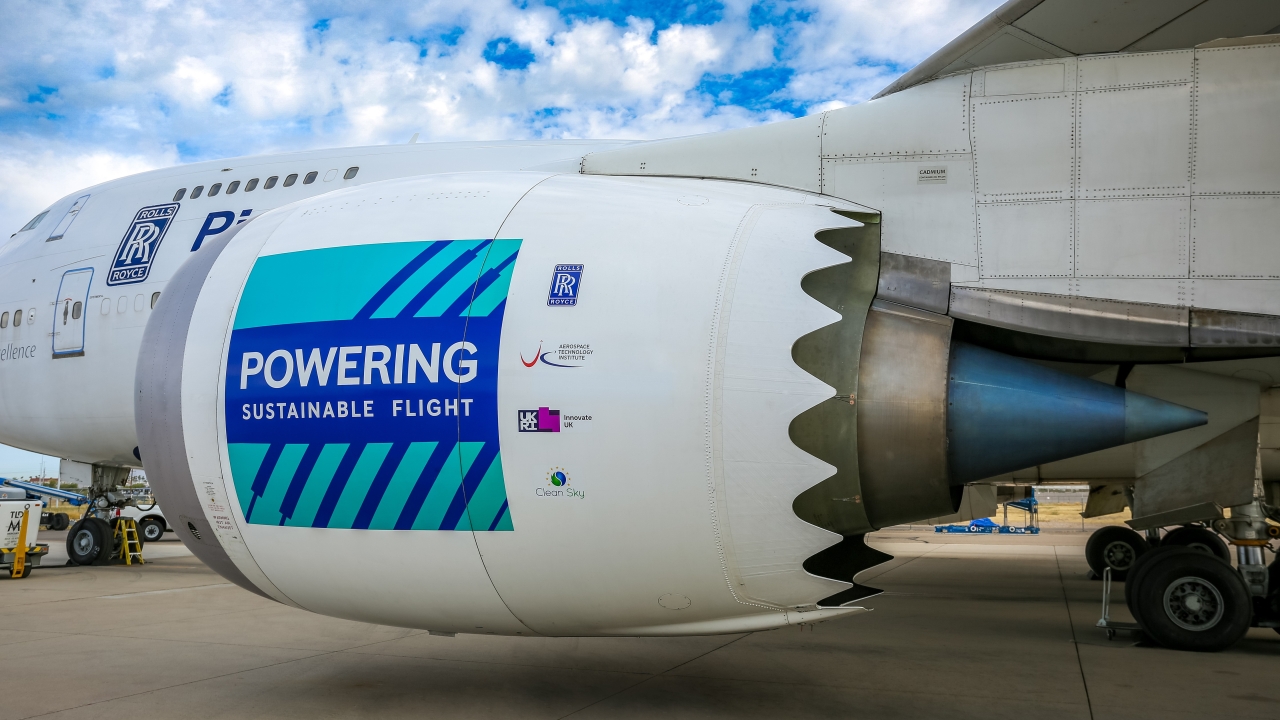Rolls-Royce low-emission combustion system in flight test phase
Rolls-Royce has successfully entered the final phase of testing its ALECSys (Advanced Low Emissions Combustion System) demonstrator engine, this time at altitude.

Rolls-Royce low-emission combustion system in flight test phase. Image: Rollys-Royce
The demonstrator took to the skies attached to the Rolls-Royce Boeing 747 Flying Test Bed in Tucson, Arizona, USA. The test programme has included flights up to 40,000 feet as well as a number of engine relights at different conditions, all of which have been successful.
The innovative lean-burn combustion system improves the pre-mixing of fuel and air prior to ignition, enabling cleaner combustion of the fuel, which results in lower NOX and particulate emissions.
The ALECSys engine demonstrator has previously completed a comprehensive set of ground tests, including icing, water ingestion, ground operability, emissions and running on 100% Sustainable Aviation Fuel (SAF).
Simon Burr, Director of Product Development and Technology, Civil Aerospace, Rolls-Royce, said: “We are very pleased to see the ALECSys engine now flying. This flight testing is a key part of our drive to not only improve engine efficiency but all aspects of environmental performance. It is part of the wider Rolls Royce sustainability strategy, which also includes support for the increased use of sustainable aviation fuels (SAF) and intensive research into alternative propulsion architectures and technologies.”
The ability to test ALECSys’ low-emissions technology in flight will allow the verification of altitude operability performance and provides experience of operating a lean-burn system to maximise maturity ahead of a future entry into service.
ALECSys is part of the UltraFan engine demonstrator programme, which offers a 25% fuel saving over the first generation of Trent engines. The ALECSys programme is supported by the EU’s Clean Sky programme, and in the UK by the Aerospace Technology Institute and Innovate UK.
Stay up to date
Subscribe to the free Times Aerospace newsletter and receive the latest content every week. We'll never share your email address.

